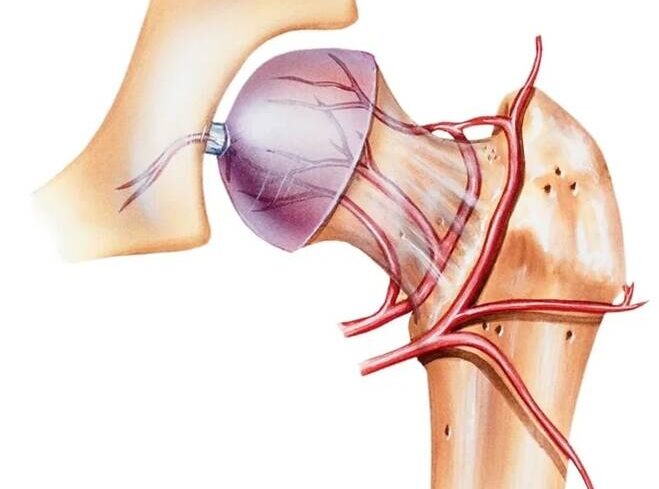For many years, when people heard about osteonecrosis of the femoral head, they thought there was no hope for a cure. However, with the development of medical technology, we have seen more and more new drugs and treatments applied to the treatment of osteonecrosis. Therefore, osteonecrosis of the femur is not as terrible as people think. Today, we will talk about the specific symptoms and treatment of osteonecrosis of the femur.
It turns out that osteonecrosis of the femoral head is such a thing.
In fact, many people have heard of osteonecrosis of the femur in their lives, but they do not have a comprehensive understanding of it. Femoral head necrosis, also known as ischemic necrosis of the femoral head and aseptic necrosis of the femoral head, is a common orthopaedic disease caused by a variety of pathological processes that lead to the death of bone cells, and bone marrow hematopoietic cells and adipocytes due to impaired blood flow to the femoral head.
Femoral head necrosis is not only for old people but also for many young people after fractures or trauma if they do not pay attention to treatment and care. According to statistics, there are about 7.5-10 million patients with osteonecrosis of the femoral head in China, and the incidence is increasing year by year, and the age of patients is gradually becoming younger.
There are many causes of femoral head necrosis, which can be broadly divided into traumatic and non-traumatic. Generally speaking, traumatic causes are caused by poor healing after external trauma due to lack of timely treatment or improper handling, resulting in insufficient blood supply to the femoral head and necrosis, such as common fractures, sprains and contusions, and joint dislocation caused by violent collisions. The non-traumatic causes are mainly long-term alcohol overdose, hormonal drugs, decompression sickness, autoimmune system diseases, etc.
The most obvious symptom of femoral head necrosis is the occurrence of pain in body parts, such as in the early stage, we will experience knee pain, but in most cases, people may think it is rheumatic pain, joint pain caused by improper exercise, and do not think it is femoral head necrosis. In addition to knee joint pain, pain can also occur around the hip, around the hip, and on the front side of the thigh. With the severity of the disease, people also feel increased pain when they walk and stilt their legs on a daily basis. Not only that, but the pain brought by femoral head necrosis will also affect our daily sleep and rest, leading to the restriction of normal activities, such as running, tai chi, walking and other sports should be reduced in frequency, or even avoid such sports.
How should I treat it? Early detection and treatment are the keys.
For the treatment of femoral head necrosis, the treatment methods will be different in different stages. In the early stage when the disease is mild, we can use anticoagulants, vasodilators, lipid-lowering drugs, and physical therapy to promote blood circulation in the bone and joint and to promote the healing of trauma and the regeneration of new cells in the bone and joint. As the disease worsens, the initial swelling and pain of the bone and joint will gradually evolve into bone deformation and collapse, and then we may have to consider surgical treatment, such as artificial hip replacement and bone graft surgery. However, surgical treatment is not “once and for all”, for example, the artificial hip joint has a certain service life and there are more complications.
In fact, most people have already missed the best time to receive treatment because of the lack of awareness of femoral head necrosis and the lack of timely and standardized treatment. And when the disease develops to a later stage, not only does the treatment difficulty increase but also the cost can be very expensive. Therefore, for femoral head necrosis, we should detect and treat it early, and choose the most effective treatment within the golden treatment time.
PRP is an autologous platelet concentrate containing a variety of growth factors that promote the proliferation of osteoblasts and preosteoblasts and inhibit osteoclast formation and bone resorption. PRP can significantly promote the proliferation and differentiation of bone marrow mesenchymal stem cells, providing the growth factors and proteins needed for femoral head repair, accelerating the repair and healing of bone tissue, and achieving the goal of treating femoral head necrosis. In addition, PRP therapy can rapidly repair the necrotic cells, and the autologous iliac bone implantation combined with marrow core decompression of mixed PRP for early ischemic necrosis of the femoral head can achieve a balance between new bone formation and bone resorption and promote bone healing, which is important for reducing joint pain and restoring joint function.
In fact, early detection and treatment are the right attitudes toward the treatment of femoral head necrosis. At the same time, in our daily life, we should also quit long-term alcoholism, smoking and other bad habits, so as to reduce the incidence of osteonecrosis. Maintaining positive and good habits is the right choice to have a healthy life.








